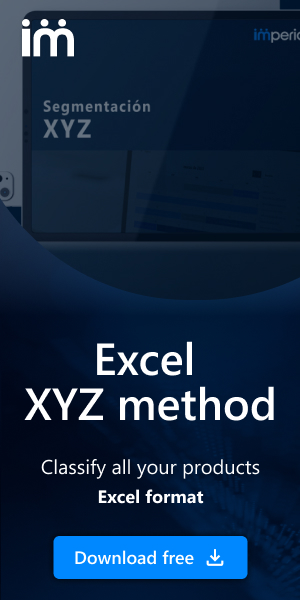Just In Time (JIT) is a methodology that originated in the 20th century to optimize stock management. It is used to improve the efficiency and competitiveness of companies. In this article, we will explore the benefits, challenges, and examples of JIT implementation in different industries, highlighting how this methodology can transform business operations. Let's get started!
What is Just In Time (JIT)?
Just In Time (JIT) is an inventory and production management methodology that focuses on minimizing response time and inventory at each stage of the production process. This approach aims to align production with actual demand, so that materials and products are delivered just in time to be used or sold, thus reducing excess inventory and associated costs. JIT relies on efficient synchronization and coordination of all stages of the supply chain to avoid unnecessary build-ups and optimize workflow.
History of Just In Time (JIT)
The history of Just In Time (JIT) dates back to the 1950s, when the Japanese automotive company Toyota, under the direction of Taiichi Ohno, developed this approach as part of its Toyota Production System (TPS). Ohno was inspired by inventory management practices observed in American supermarkets, where products were quickly replenished based on customer demand. By implementing these principles in manufacturing, Toyota significantly reduced production times and associated costs, allowing them to be more competitive in the global market. Over time, the JIT methodology has spread and been adapted across various industries worldwide.
Benefits of implementing Just In Time
Implementing the Just In Time (JIT) system in the supply chain offers numerous benefits that can enhance the efficiency and competitiveness of companies. Firstly, adopting JIT allows for a considerable reduction in costs and waste, optimizing resources. Additionally, JIT improves efficiency and productivity by synchronizing production with real market demand and eliminating operational inefficiencies. These combined benefits not only increase profitability but also promote more sustainable and responsible practices within the organization.
Reduction of costs and waste
One of the most significant benefits of implementing Just In Time (JIT) is the reduction of costs and waste. By producing only what is necessary at the precise moment, companies can significantly lower inventory levels, which in turn reduces storage costs and inventory maintenance. Additionally, by avoiding the accumulation of unnecessary stock, the risk of obsolescence and product deterioration is minimized, contributing to more efficient and sustainable resource management. The reduction of waste also extends to materials and resources used in production, promoting more eco-friendly and responsible practices.
Improvement in efficiency and productivity
The implementation of Just In Time (JIT) also leads to an improvement in the efficiency and productivity of operations. By synchronizing production with actual demand, companies can optimize the use of their resources and production capacities, eliminating waiting times and bottlenecks. This allows for greater flexibility and responsiveness to market changes or customer demands. Moreover, by maintaining a continuous and balanced workflow, product quality is improved and defects are reduced, contributing to higher customer satisfaction and a better reputation for the company in the market.
Challenges of Just In Time
The implementation of Just In Time (JIT) presents challenges in risk management and resilience, as well as in organizational culture and paradigm shift. This approach, while efficient, can increase companies' vulnerability to supply chain disruptions. Additionally, it requires a deep change in employee mindset and constant adaptation.
Risk management and resilience
Despite its numerous benefits, Just In Time (JIT) presents certain challenges, especially in terms of risk management and resilience. Dependence on timely deliveries and the reduction of safety inventories can make companies more vulnerable to supply chain disruptions, such as natural disasters, strikes, or logistical issues. To mitigate these risks, it is crucial for companies to develop risk management strategies, such as supplier diversification, the implementation of real-time monitoring systems, and the creation of contingency plans to ensure operational continuity.
Organizational culture and paradigm shift
The implementation of Just In Time (JIT) requires a change in organizational culture and employee mindset. This approach demands constant adaptation and effective communication across all levels of the company. It is essential to foster a culture of continuous improvement and collaboration, where all team members are committed to efficiency and quality. Resistance to change can be a challenge, so training and proactive leadership are crucial. Adopting JIT involves a paradigm shift towards more agile and flexible production, aimed at meeting real-time demand and optimizing available resources.
3 Strategies for implementing Just In Time
Some strategies to facilitate the implementation of JIT in companies include:
- Improvement in demand planning and forecasting: Implement advanced demand forecasting systems based on historical data and predictive analysis. This will allow for more accurate forecasting of production needs and delivery times, ensuring that materials arrive just in time to meet demand.
- Establishment of collaborative relationships with suppliers: Foster strong relationships with reliable and geographically close suppliers. Establish collaboration agreements, such as Vendor Managed Inventory (VMI), to allow suppliers to manage inventory levels and automatically replenish based on real demand.
- Implementation of flexible production systems: Adapt production lines to allow for quick and efficient changes in manufactured products. Use methods such as lean manufacturing to eliminate waste and optimize workflow, enabling agile and adaptable production to market fluctuations.
Successful examples of Just In Time implementation
The Just In Time (JIT) methodology has been successfully adopted by various companies around the world, particularly in the automotive industry. Toyota, a pioneer in JIT implementation, has optimized its production processes by reducing inventories and improving efficiency. Toyota's production system is based on delivering the necessary parts just in time for the assembly line, allowing the company to reduce storage costs and minimize waste. Additionally, this approach has strengthened Toyota's flexibility to quickly adapt to changing market demands, establishing itself as a global leader in automobile manufacturing.
Another notable example of successful JIT implementation is Dell, a leading company in the technology industry. Dell revolutionized the market by using JIT to assemble its products only after receiving an order. This strategy allowed them to drastically reduce inventory levels and offer customers customized products at competitive prices. By closely integrating their suppliers into the production process and maintaining constant communication, Dell has maintained a continuous flow of materials and components, ensuring efficient and rapid production. This approach has not only optimized the company's resources but also significantly improved customer satisfaction, strengthening Dell's position in a highly competitive market.
These cases illustrate how JIT implementation can transform the supply chain, driving operational efficiency and reducing costs. Adopting this model requires a firm commitment to continuous improvement and effective collaboration among all involved parties, but the benefits obtained demonstrate that it is a viable and successful strategy.
Improve your efficiency by applying Just In Time (JIT)
Implementing Just In Time (JIT) in the supply chain offers multiple benefits, such as cost and waste reduction, and improved efficiency and productivity. However, it also presents challenges, including risk management and the need for organizational cultural change. Successful examples like Toyota and Dell show that with firm commitment and a well-developed strategy, JIT can transform operations, optimize resources, and increase customer satisfaction. Adopting this methodology involves continuous effort in improvement and collaboration, but the results can consolidate a sustainable competitive advantage in the market.
At Imperia, we work to help companies optimize their supply chain, gaining efficiency and competitiveness. Thanks to our demand planning software, we facilitate strategic decision-making that leads them to business success. If you want to know more, request a free demo with our experts.

Enter your email and download the content
In supply chain management, identifying key elements that require special attention can make the difference between success and failure.





























































 Imperia_thumbnail.jpg)





















